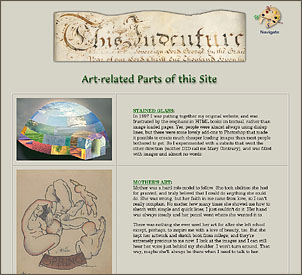Diana Coomans (1861-1952)
The late Joseph Coomans was one of the most popular of European painters with American collectors,
and the sale of his works in this country alone made him a very rich man. He was a native of Brussels,
and a pupil of Professor Hasselaere
at Ghent, and of Nicaise de Keyser and Baron Wappers at the Antwerp Academy. From Antwerp he
removed to Paris, and going with the French army to Algiers, where he resided several years,
he later traveled extensively in Italy, Turkey, Greece, and the Crimea. At this time he painted
historical and portrait subjects, but in 1857 he visited Italy, and became interested in the remains of
ancient
Pompeii, which were then being excavated. From this time forth he took up the line of
subjects which made him famous. He had two daughters, both of whom possessed remarkable artistic
gifts, and who, as his pupils, became well-known painters. Some
years before his death he visited America, residing here for a prolonged period, and his daughters
accompanied him and became favorites in the best New York society. Both Miss Heva Coomans and
her sister Diana paint the same class of objects as their father, and very much in his manner and
feeling of color. In "The Pompeiian Flower Girl" is presented an extremely characteristic example
of one talented daughter of a famous parent.
Miss Diana Coomans turns from Pompeii to Athens for "At the Callirhoe Spring."
The fountain of Callirhoe, called the fountain of nine springs, because its waters were distributed in
that number of channels, was credited with magical properties and powers, and its fluid treasure was
sought with prayer and floral invocation by the maidens, to whom it was supposed to bring good fortune in
affairs of the heart. The fountain, it may be added, derived its name from the daughter of the river-god
Achelus, to whom it was dedicated.
Pompeii was essentially an aristocratic city. It bore pretty much the same relation to Rome that Newport
does to New York. That is to say, it was the home of the wealthier class, and even its poor, who served them,
were relatively well-to-do compared with the rabble of the Imperial city. The fruit-girl
in Miss Coomans'
picture is an instance of this.
The ancient Egyptians held their dead in the most devout reverence. Those even of the poorest were
embalmed with many ceremoies, and in every wealthy house was a private temple in which the statues of the
departed were worshipped. Elegiac music and songs were the accompaniment of these ceremonials. The picture
by Miss Coomans represents some Egyptian princess who has lost one whom she has reverenced or loved, and
to whom, as she sits in the throne chair of her house, her slaves sing the elegy to the dead.
In "Attention" Miss Coomans shows a Greek girl, who has been preparing an offer of
incense and flowers to her household deity, on the terrace, and who interrupts it to watch
curiously something which is occurring or some one who is passing on the street below.
[NY Times of June 19, 1952, "Miss Diana Coomans, Artist, Striken at 90"]
Previous Artist Next Artist





![]() Copyright © 2007, Mary S. Van Deusen
Copyright © 2007, Mary S. Van Deusen